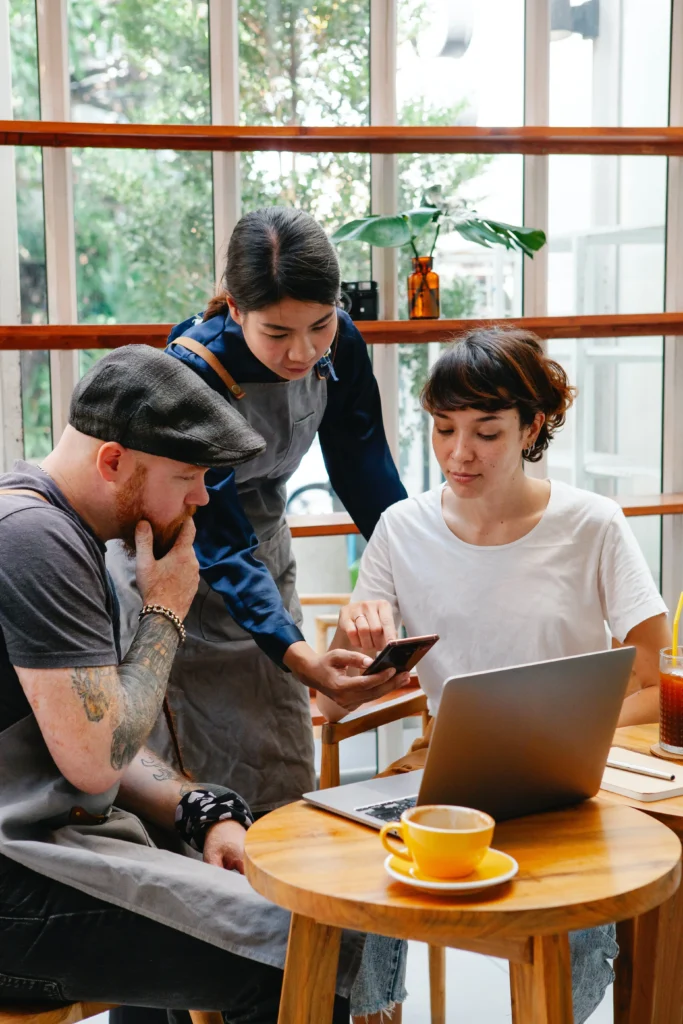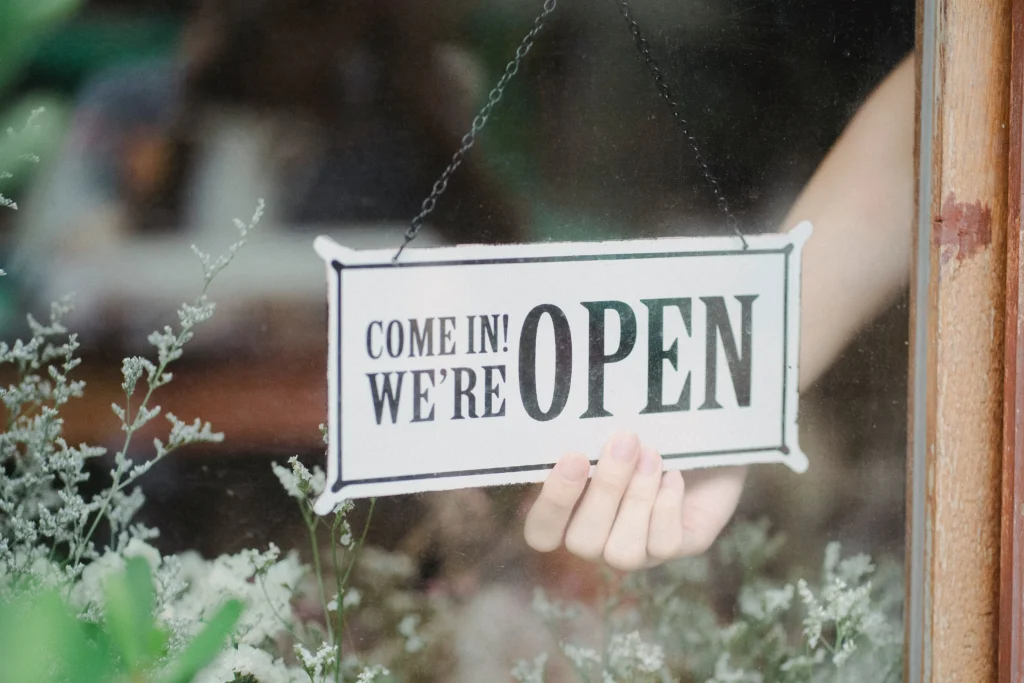Ever wondered how to distinguish your brand from the internet noise and develop a devoted local following?
We’ll examine hyperlocal social media marketing in this blog and how using social media platforms may help you unlock the untapped potential of your local area.
Whether you own a tiny neighborhood store, a local eatery, or a nonprofit with a strong sense of community, you can use these tips to improve your marketing efforts in your area.
What is Hyperlocal Social Media Marketing?
Hyperlocal social media marketing is a focused marketing strategy that emphasizes connecting with clients in a small, usually localized geographic region, such as a neighborhood or community.
It all comes down to adjusting your social media strategy and content to connect with the local audience’s interests, requirements, and culture.
Assume you are a small coffee shop owner looking to attract more consumers from the nearby blocks. Hyperlocal marketing would entail producing content that promotes neighborhood activities, working with surrounding companies, and displaying local clientele as opposed to a generic social media strategy.
Relevance and personalization are crucial here.
You may cultivate genuine relationships with your close neighbors by utilizing social media platforms, which will increase foot traffic, create brand loyalty, and help them integrate into the community.
The goal of hyperlocal social media marketing is to make your company more accessible to local customers and establish it as the neighborhood favorite.
Related: Hyperlocal SEO Strategies to Keep Your Local Business Ahead of the Game
Why Your Local Business Needs Hyperlocal Marketing

Hyperlocal marketing stands out as a game-changer in today’s dynamic digital economy.
Due to the dominance of internet interactions in our everyday lives, customers today want genuine relationships that reflect the friendliness of their local community. This is where localized marketing excels.
You may personalize your communications and marketing for the local audience by focusing on a particular area or community. Hyperlocal marketing establishes a sense of proximity and relatability that traditional marketing finds difficult to attain.
Related: Here’s Why Social Commerce is the Future of Digital Marketing
Additionally, hyperlocal marketing encourages true relationships with customers. It fosters brand loyalty and community advocacy in a world where authenticity and trust are paramount.
The value of hyperlocal marketing in the digital age resides in its capacity to revive the small-town charm. It produces a significant effect that may translate into long-term success for your businesses.
How Hyperlocal Social Media Marketing Differs from Traditional Social Media Marketing

The standard social media marketing and hyperlocal marketing differ with respect to their regional focus and audience reach.
Using generalized content to appeal to a range of interests, traditional social media marketing strives to reach a wider and more diversified audience across greater areas, or even nations.
Hyperlocal marketing, on the other hand, focuses on reaching a particular local audience within a particular neighborhood or community. It distributes information directly to consumers in a specified region by utilizing geotargeting and location-based features, promoting community participation and trust.
Due to the ability to customize messaging, promotions, and events to the specific traits and preferences of the local audience, businesses may increase consumer loyalty on a more intimate level.
How to Create the Perfect Hyperlocal Marketing Strategy

Step 1: Understand Your Hyperlocal Audience
Knowing your neighbours by name is similar to knowing your hyperlocal audience.
Connecting with those who live, work, and play in the same neighborhood as your business is key. Hyperlocal marketing necessitates a similar level of familiarity as when you may wave at the regulars walking by your store.
Consider a neighborhood bakery that wants to increase its local clientele. Understanding their hyperlocal audience can help them make appealing social media postings featuring freshly baked goodies that suit the taste of the neighborhood. To encourage neighbors to share their favorite recipes, they could hold special events like “Community Cookie Swap”.
Additionally, by interacting with consumers through comments and messages, the bakery can quickly address questions and forge real connections with the community members.
You’ll be better able to customize your marketing initiatives and create enduring relationships in your immediate area if you take the time to comprehend the interests, demands, and cultural background of your hyperlocal audience.
Step 2: Choose the Right Social Media Platforms for Hyperlocal Marketing

In the era of hyperlocal marketing, choosing the best social media sites is similar to choosing the best hangout place for your neighborhood. Understanding the subtleties of each platform’s own feel may significantly improve your marketing results.
Most Frequently Used Social Media Sites for Local Marketing
Similar to how different individuals have favorite places to socialize, different social media sites target different populations.
For instance, Facebook may be the preferred online gathering place for residents to interact and exchange information about their communities. On the other hand, Instagram may work as the modern art gallery, luring inhabitants who value creativity.
Understanding the unique “vibe” of each platform enables you to customize your content and strategy to appeal to your hyperlocal audience.
Examine Local User Engagement and Platform Preference
Researching user involvement and platform preferences in your region is important. Much as you may inquire around your neighborhood to learn about the most well-liked hangout areas.
Look into the platforms that your target audience uses most frequently. Do they frequently tweet short updates regarding local events? Do people prefer to find local companies and ideas on Pinterest?
You may concentrate your efforts where they are most effective by being aware of these patterns.
Design Platform-Specific Strategies to Have the Most Impact
Create targeted strategies once you’ve determined the hotspots in your online neighborhood.
Consider a neighborhood coffee shop that uses Facebook to promote events and meetups. They may be luring locals in with images of warm drinks and inviting gatherings. While doing so, they may use Instagram to show off their latte art prowess and interact with locals through lovely visual storytelling.
You can quickly create an active and devoted hyperlocal community by tailoring your content and strategy according to each platform’s feel.
Step 3: Craft Hyperlocal Content that Resonates
Creating hyperlocal content that really resonates with readers is like writing a personalized letter to a close friend.
Delivering content that resonates directly to your local audience requires an awareness of their specific interests.
Let’s assume that you manage a specialized fitness center in a small-town setting. Create blog pieces or social media updates that feature local folks accomplishing their fitness objectives as success stories instead of general fitness advice. Share pictures and videos of genuine students working hard in class to honor their achievement. Create contests that the neighborhood may participate in, such as a “30-Day Plank Challenge” with a neighborhood leaderboard.
You may create a devoted following of customers who are ready to interact with and support your company. This can be done by create content that accurately represents the goals and accomplishments of your hyperlocal audience.
Step 4: Use Geotargeting and Location-Based Features

Geotargeting and location-based features serve as the GPS in hyperlocal marketing, directing your audience directly to your company.
You may make posts and stories on social media sites like Instagram and Facebook that include the geographical location of your company by utilizing geotags and location stickers. By identifying their swoon worthy location in social media posts, a cozy bookstore, for instance, might tempt neighboring bookworms to swing by for a literary vacation.
Send your consumers personalized messages based on their precise location, geotargeted advertisements and promotions.
Engaging local customers through check-ins and feedback gives your marketing efforts a more human touch. Customers that check in at your business may tell their networks about their experience, which helps the word spread naturally.
Additionally, answer customer complaints or thank them for their positive remarks in response to reviews. This promotes community trust and demonstrates your dedication to providing outstanding service.
By bridging the gap between your company and the neighborhood’s residents, these location-based strategies make sure that your hyperlocal marketing initiatives always hit the mark.
Step 5: Collaborate with Local Businesses and Organizations

Working together with nearby companies and neighborhood groups is like unearthing a gold mine of advantages in the realm of hyperlocal marketing.
Cross-promotional options with regional partners provide you the chance to reach a wider audience by utilizing each other’s client bases. For instance, a fashion boutique and an adjacent accessories store may work together to give their respective clientele exclusive deals.
Hosting joint gatherings and activities draws residents searching for interesting experiences by creating a buzz. Consider collaborating with a health food shop to offer a “Wellness Day” with free exercise classes and wholesome treats.
In addition to enhancing your company’s brand, supporting neighborhood issues and civic projects helps you build closer ties to the community. A café may take part in a fundraising campaign and donate a portion of its earnings to a neighborhood food bank, which would win the support of the café’s customers.
Incorporating your brand into the community’s fabric through partnerships with neighborhood companies and nonprofits will help you grow as a business while also having a good effect on the area.
Also Read: How to Maximize Your Business Conversions with Nanoinfluencer Marketing
Step 6: Track and Measure Hyperlocal Social Media Marketing Success

Tracking and assessing your efforts of hyperlocal social media marketing is important to measure the impact of campaign.
The first stage is to define key performance indicators (KPIs). This involves choosing the metrics that correspond to the objectives of your campaign.
As an illustration, a neighborhood restaurant may use the quantity of bookings booked through their Instagram page as a KPI to assess the performance of their campaigns.
It’s critical to track localized reach and interaction to determine how effectively your material connects with the local audience. Watch out for comments, shares, and tags, which indicate how connected and active the community is.
Perhaps the most practical approach to judge the performance of hyperlocal marketing is to measure foot traffic and local sales impact. You may measure the direct effect of your internet efforts on the physical world by measuring in-store visits or increase in local sales.
With these tools for navigating in place, companies can confidently direct their hyperlocal marketing initiatives and make data-driven decisions.
Conclusion
Hyperlocal social media marketing is incredibly effective at creating deep connections in your local community. Businesses may create enduring relationships and a devoted community by personalizing content and interacting with the local audience. By highlighting the value of a strong local presence, businesses may strengthen their brand recognition among locals. Continuous adaptability and novel techniques are essential for hyperlocal marketing endeavors to succeed in this dynamic environment.



